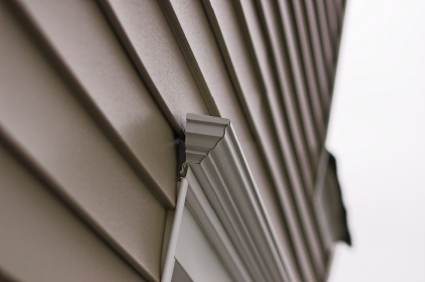Vinyl Siding Health Dangers
 Is it safe to install vinyl siding? An expert on green building reports that while vinyl can be a dangerous material, there is little credible research into the effects of living with vinyl siding on human health. "The impact is more in the manufacture and disposal [of vinyl or PVC products]," said Greg Caplan.
Is it safe to install vinyl siding? An expert on green building reports that while vinyl can be a dangerous material, there is little credible research into the effects of living with vinyl siding on human health. "The impact is more in the manufacture and disposal [of vinyl or PVC products]," said Greg Caplan.
Vinyl has been documented by the Environmental Protection Agency and other health organizations as containing a known carcinogen (dioxin) and various hormone disrupters. In addition, lead, a toxic metal, is often used as a stabilizing agent in the production of vinyl siding products.
What is Vinyl?
Vinyl is made from polyvinyl chloride (PVC), a plastic resin that is a known carcinogen. However, vinyl has become the most popular siding material in the US. PVC vinyl became popular in the 1960s and grew in popularity when other plastics containing PCBs, CFCs, and chlorinated solvents were eventually banned. PVC vinyl is one of the world's leading sources of dioxin, according to Greenpeace.
The Benefits of Using Vinyl Siding
Vinyl siding is inexpensive and can be installed on top of wood clapboard or cedar shingles. Vinyl siding does not need to be stained, painted, or sealed, although it usually does need to be washed at least once a year. It is easy to work with, comes in a variety of colors, and can mimic wooden architecture and styles.
The Dangers of Vinyl Siding
"Your biggest concern is if the house catches fire. Even the ash is dangerous," said Caplan. Even a small house fire that affects the vinyl siding will lead to the release of a host of toxic chemicals known to severely damage lung and kidney tissue. He added that the binders in vinyl siding are also affected by ultraviolet light and oxidation. "We see that with all kinds of plastics," he said.
Heat and severe weather may have also played a part in numerous reports in 2006 of illnesses affecting Hurricane Katrina evacuees who were placed in FEMA trailers. Most, if not all of the trailers were vinyl-sided.
People working in or living near a vinyl manufacturing plant are exposed to the most health dangers and are at the greatest risk for cancer, neurological damage, birth defects, and lung and kidney disease.
Vinyl is most dangerous when being manufactured and during disposal. Vinyl in a landfill can be a threat to groundwater via release of dioxins and other toxins as the material breaks down.
Alternatives to Vinyl Siding
Okay, so you are concerned about possible health dangers of vinyl siding, but still would prefer not to have to paint your house. Consult a siding installation expert about the green alternatives, which include:
- Aluminum siding has similar benefits to vinyl siding. You can more often find recycled aluminum siding products. The downside is that aluminum can dent and is very hard to work with, in terms of construction.
- Steel or enameled steel siding is extremely strong. It is also available in pre-painted form. However, the cost of steel siding is greater.
- Bark shingles are an economical salvage product, which are great for someone who wants a natural look. "After all, nature made them to cover a tree for 100 years," Caplan said.
- Cement siding gives a look similar to clapboards and also can come pre-painted. Durable and resistant to rot, insect damage, mold, and fire, it is moderately priced.
This article was updated November 19, 2017.
Looking for a Pro? Call us (866) 441-6648

Average Costs
Related Experiences

Garage Roof Replacement Increases Curb Appeal Of A House For Sale

Cement Tile Roof Repair Took Some Detective Work



